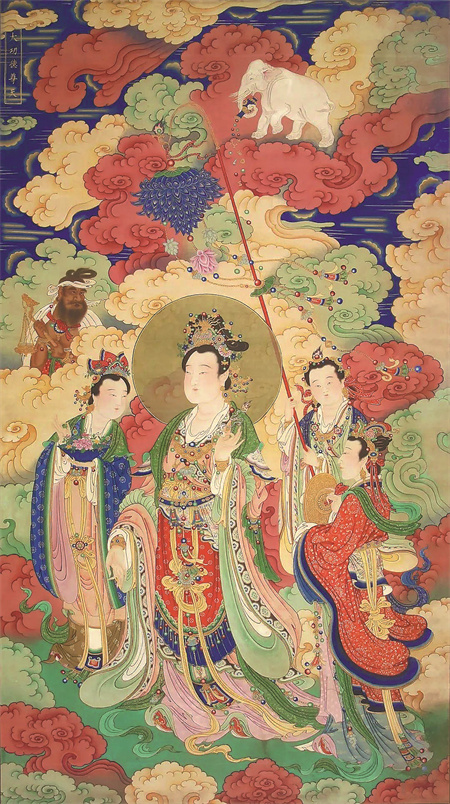

Highlighting rituals
Figure paintings that depict Taoist and Buddhist themes add to the distinction of classical Chinese art, in terms of the richness of the palette, content and brushwork. The abundance of underlying historical and cultural messages reflect the exchanges between the East and the West, with the communication inspiring local artists, artisans and art patrons to create and enrich homegrown styles of art. The Capital Museum is showing selected Taoist and Buddhist figure paintings from its collection at The Boundless Universe in Paintings. The works are from the Ming (1368-1644) and Qing (1644-1911) dynasties, when the genre of figure painting gained momentum, backed by booming commerce and urban life. A category of this style of art in spotlight at the exhibition is the shuilu ("water and land") painting, which was commissioned for shuilu fahui, a ritual assembly of the Chinese Buddhist repertoire. It was held to show reverence to deities and saints and to pacify spirits on land and in water. Shuilu paintings, attesting to both high society and grassroots pilgrims, epitomized the rituals and social customs related to this kind of event in ancient times. They are important in the study of religious beliefs, aesthetic evolution and social life of the Chinese living centuries ago. The exhibition runs through to July 23.
9 am-5 pm, closed on Mondays. 16 Fuxingmen Wai Street, Xicheng district, Beijing. 010-6337-0491/92.